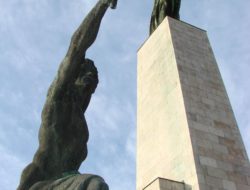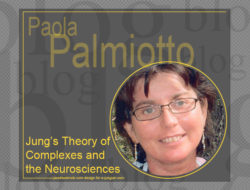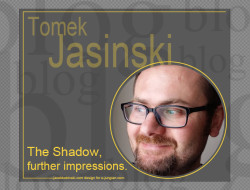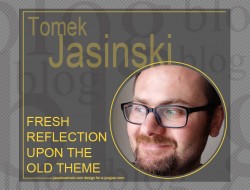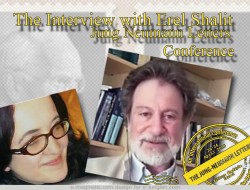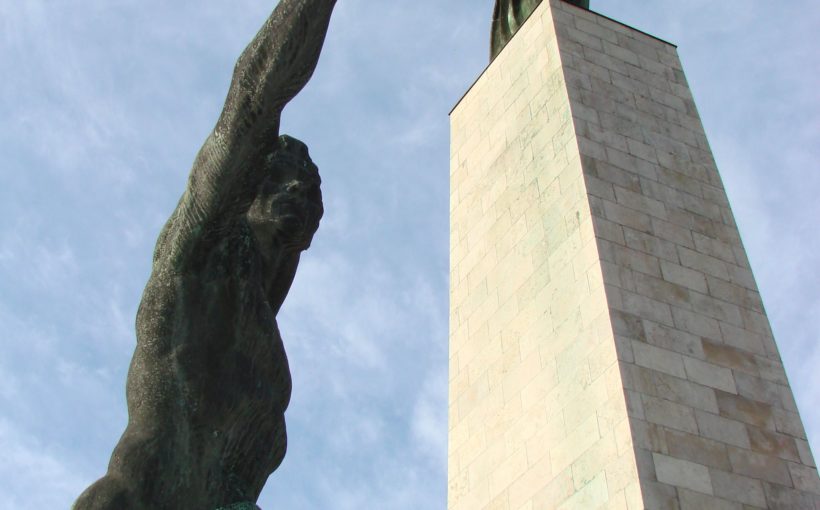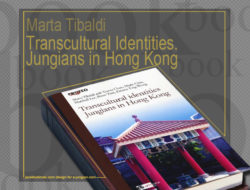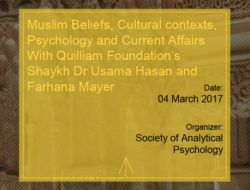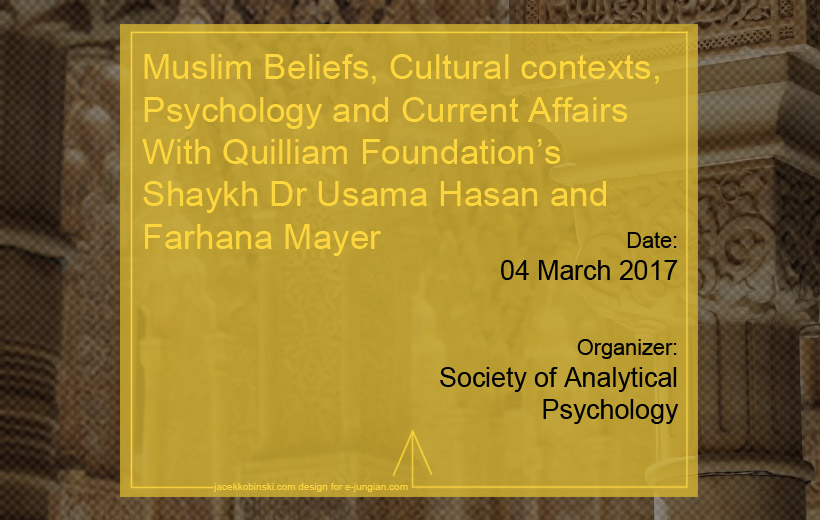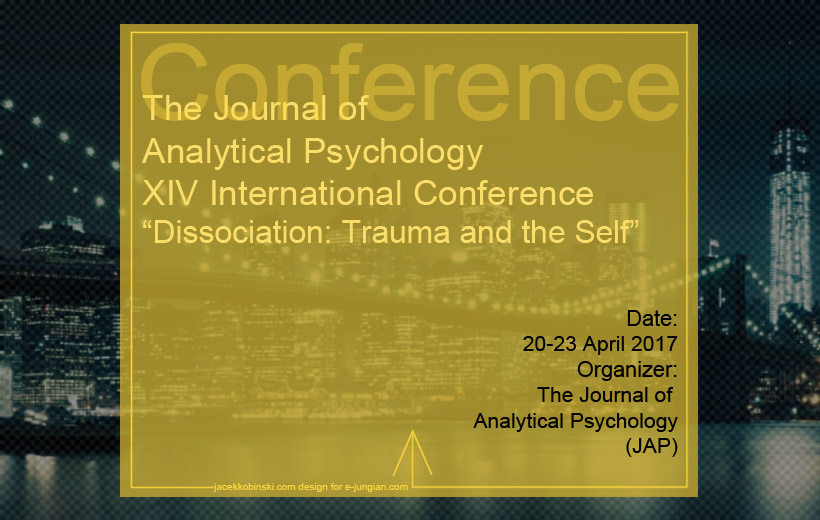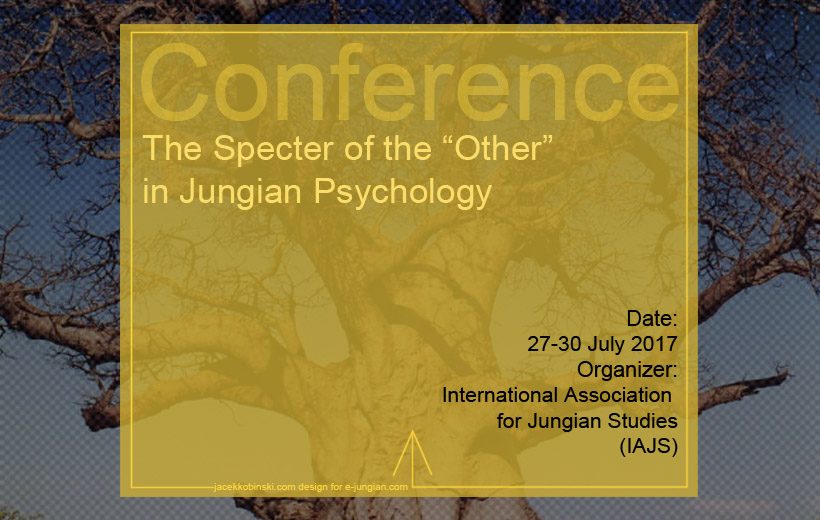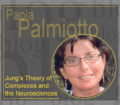There is a country
I’ve been to in my dreams: Hungary, in whose face I have seen my own face.
Come and be the one,
when a new day dawns,
who awaits.
Come and slip beside me again, Hungary. I’ve been waiting a thousand years.
(Hungary. A video clip.
Lyrics translated by Piroska Nagy)
Introduction
Returning home after having spent 2 years in San Francisco I had a strange dream:
I am in a nice apartment, which reminds me my old flat in downtown Budapest. I go to the bathroom, but the toilet is jammed with toilet paper. I can’t flush it. Suddenly I’m standing at the window and seeing the street outside. The picture starts to move. No, it’s not the world that is moving, but I, for I am in the back of a flat truck, looking out through a small window. I feel something terrible will happen unless I do something. I have to do something. I collect all my energy and ram my head into the door. I fall from the speeding truck and look for a place to hide.
The emotions and first associations I discussed with my analyst were terror, a loss of personal freedom, captivity, an unknown enemy, deportation, and my desperate escape from danger brought to the surface from the historical layers of my unconscious. I could not relate the contents to my personal life, but as my culture shock of coming home to a country divided by controversial public opinion surrounding the Magyar Gárda, a new semi-military, nationalist and racist group marching the streets. My analyst and I agreed that my dream could be interpreted as a way my unconscious dealt with my personal experiences (home-coming) and the current political upheaval linked to bad historical memories stored in my cultural unconscious. From that point I became intrigued with the possible application of the emerging theory of the cultural complex to my everyday experiences with Hungarian social and political issues.
The term cultural complex was coined by Sam L. Kimbles and Thomas Singer (2004) on the basis of Carl Jung`s and Joseph Henderson`s theories.. By definition, the cultural complex is a kind of repetitive, historical group experience, which takes place in the cultural unconscious of a group. These complexes are dynamic systems of relations between the individual need for belonging and the shared group experiences and expectations mediated by history, ethnicity, religion, gender or other social identity processes.
At the time of the 20th anniversary of the transition to democracy in Hungary, large numbers of books, memoirs and articles were published, and the media was full of documentaries, reports and discussions summarizing and analyzing its results and pitfalls. At first I, as a member of the generation born and educated during the socialist era, also believed that most of the problems were inherited from the socialist system through our reflexes and socialization, which became maladaptive and a hindrance to the changing of the system. Certainly, social learning and unresolved questions concerning the defeated revolution of 1956 are influential factors of the controversies surrounding the change of system, but they are not the only ones. As I dug deeper, Hungary’s diplomatic difficulties with its neighboring countries and the many bumper stickers with the map of Great Hungary prompted me to think about also the significance of unprocessed traumas of our history, which continue to carry strong and long-lasting repercussions.
In my presentation I will discuss a few tendencies of the present situation in Hungary, by nature through my subjective lenses, and will explore their relationship with the culture complexes of Hungarians rooted in the historical past from a Jungian perspective.
The current situation
Two decades have passed since the official declaration of the change of system in Hungary, one of the first post-Soviet countries to have shifted to a multi-party democracy and free market economy. After a short period of heightened optimism it became clear that the changes are neither good nor bad, not equal for everyone, and do not necessarily mean a better life and development. Indeed, Hungary today is rife with political instability, bleak economic prospects, and in the midst of a deep social and moral crisis. Politicians are busy with their power games and unable or unwilling to force real change, while at the same time Hungarian society is not prepared to push for things from below. Lacking a good solution irrational voices of both left and right wing extremists, nationalists, racists and anti-Semitics are all too frequently heard. The recent European Parliamentary election resulted with the unquestionable advance of conservative parties Europe-wide, yet the Hungarian result, the surprising and significant jump in the popularity of the “Jobbik” (in English: More Right), a recently formed ultra right wing party, shocked public opinion both locally and internationally. In my opinion the change of system has not yet ended. It has only taken place in part and mostly in the area of political and economical change. After a short and desperate attempt for real change, and the collapse of the first democratic government, each successive government of the past 20 years has been a continuation of the socialist heritage. All were reluctant and feared the reformation of political and public institutions, followed popular politics in favor of voters, and financed false promises of equal rights and a prosperous life for all by selling state owned properties and through foreign loans. Instead of real economic development corruption on every level, luxurious and irrational investments, a state deficit, increasing social and economical inequalities as well as the absence of opportunities such as the delaying of infrastructural development, the shamefully canceled World Expo, rejected applications to host the Olympic Games or the European Football Championships etc., are characteristic of this period.
Communism left the mentality of dependence on the state; getting safety living and being taken care by the state. To change those 40 years, it seems one generational change is not enough. It requires one or two more. Many of the problems we have are because this new democracy has not had time to create checks and balances. The old system of equal right for free education, health care and a good enough pension is still popular and widely shared expectation of people. This is a holdover from the country’s domination by the Soviet Union. After the Soviets crushed the 1956 Hungarian Revolution, leaders in Budapest made an implicit deal with the people. In exchange for no more unrest and social disruptions, the leaders would provide modest freedoms and a comfortable state welfare net. After the fall of the Soviet Union, almost all the post-soviet countries were keen to dismantle the old state system. The Baltic countries of Latvia, Lithuania and Estonia became showcases for shrinking government. Slovakia moved to a low flat tax. Hungary, too, embraced capitalism and championed privatization, but even as it shrunk the state it attempted to retain its social safety net. On other hand no one cares about the sources and though the government’s finance exclusively depends on taxes, the average Hungarian is reluctant to pay and notoriously (and unpunishingly) looking for various tax avoiding techniques. As the consequence in Hungary, we have 3 million pensioners, other 4 million inactive and only 3 million taxpayers. From those who pay tax almost 1 million people employed by the government. So, practically around 2 million taxpayers pay the other 8 million people’s social welfare in Hungary. To pay for all of this, Hungary keeps high taxes and has borrowed to make up the rest. The tax burden has driven the cost of labor up faster than in neighboring countries, hurting Hungary’s competitiveness. Though the democratic change has been never questioned and cannot be turned back, politically we are also marching backward. Instead of a real multi-party democracy politics is currently determined, and frozen by, the open fight between the two major parties: the governing Socialists and their opposition, the right-wing conservatives. And since what plays out on the upper level is what plays out beneath, the whole nation is divided along these political lines, sometimes even within the same family. Hungary became a country where acts have no consequences. Unfortunately, the last twenty years was not enough to uncover the names of all the informers and secret agents during the era of communism. And those who have been identified – renowned politicians, artists and public figures – don’t apologize for their shameful acts. Without exception, they try to explain it away by providing excuses and referring to the circumstances of the times.
Many ministers, politicians and influential businessmen have been failed and cited to court during this period. The bigger the scandal was, the more certain it was that the guilty got away with it: stolen billions, successful companies going bankrupt, and corruption during privatization. The best example of the abuse of power and responsibility, followed by a total lack of accountability – interestingly enough the Hungarian language has a word for this, though it is not often used– was the formal speech of the prime minister at the time, who confessed that he and his party mismanaged the country, screwed up – in his words –, lied and misled the voters and public opinion. His speech was audio-taped and somehow sneaked out, becoming public in the fall of 2006. He, however, did not resign, which caused a serious political crisis and resulted in several large demonstrations, which turned into riots. Fighting in the street was squelched and the governing party supported the prime minister and stabilized him in his post, where he remained for another year or so. This situation upheld the deep political, economic and moral crisis, which intensified by the effects of the global economic crisis, led Hungary to the edge of collapse.
Peter Nádas, a contemporary Hungarian writer, said that after the Hungarian revolution and it’s crushing in 1956 “Hungary attempted a type of socialist-capitalism that was like fitting a square peg in a round hole. It was common knowledge then that if you did not speak out you could carry on with your little dealings. Gradually a second, then third economy developed, a culture of corruption.” Another consequence of the failure of the revolution, Nádas added, was that most Hungarians were conditioned to feel powerless and abandoned by the West, fostering a suspicion of foreigners which in the post-communist era and thanks now to the fragmentation of European opinion over American relations, has bred dangerous nationalism that is spreading throughout the former Soviet countries and elsewhere.
Psychologically we are locked in the past, our complexes from the past influence and direct our thinking and behavior. In itself the change of system could not solve these questions, questions Hungary has been struggling with for centuries, or to be more precise, more than a millennium. These problems still exist today, appearing even more intensely than before. The freedom gained by the change of system dissolved the Iron Curtain, which also served as a protective barrier against global influences. New, previously unknown as well as latent societal and social problems emerged and came out into the open: poverty, drugs, prostitution, international crime, and unemployment. Furthermore, the change loosened the solid internal structure of the old regime and freed– like a Genie from a bottle – oppressed tension of long existing problems concerning Hungary’s neighboring countries and its minorities: Jews and especially the Gipsy population.
This however pessimistic view is, however, backed by shocking statistics, some well known, and others more obscure. Hungarians drink more, smoke more, take more prescription drugs and commit suicide in higher numbers than anyone else in the OECD countries. Those that survive have one of the lowest life expectancy rates, especially for men (69 years and 76 for women). One in four Hungarians has mental problems and lives 15-20 years less than the average. Unemployment is rising, the GDP is dropping. Things are not better culturally either. It is not just the high number of hours spent watching TV (4 hours a day). Sixty percent of the population will not read a single book in a year. One third of those between the ages of 18-29 have never been to a library. Twenty percent of the population is functionally illiterate. Although some tendencies are very similar to other Central and Eastern-European countries, some are unique and exclusively typical of the Hungarian situation.
The theoretical framework
In the search for psychological understanding of the current Hungarian situation as the reflection of the past, I turn to the Jungian concept of cultural complex that offers a living, dynamic field for the exploration of the relationship with living history.
By making past events meaningful, the historian exercises an important psychic capacity, that of reflection: This does not confer retrospective truth on the past – indeed, almost the contrary – but creates a new meaning that did not exist before, one that could not exist were it not based on past events and did it not transform them into a tapestry holding them in a new place. (Bollas, 1995, p.143)
According to Singer and Kimbles (2004) this place or energetic field of transformation is organized by cultural complexes. The concept is based on Carl Jung’s idea of complexes that defined complexes as emotionally charged groups of ideas and images around archetypal cores, whereas archetypes are the basic inherited units of universal human perceptions and behaviors.
…the archetypes, are as it were hidden foundations of the conscious mind, or … the roots which the psyche has sunk not only in the earth in the narrower sense but in the world in general. Archetypes are systems of readiness for action, and at the same time images and emotions. They are inherited with the brain structure – indeed, they are its psychic aspect. They represent, on the one hand, a very strong instinctive conservatism, while on the other hand they are the most effective means conceivable of instinctive adaptation. (Jung, 1931/1975, p.31)
More simply put these complexes operate and regulate both our intrapsychic and interpersonal conflicts to adapt us to the social environment regardless of whether we are aware or unconscious of it. Singer and Kimbles (2004) developed and extended Jung`s complex theory on a social level by supplementing Joe Henderson`s concept of the cultural unconscious that is proposed to mediate a shared group experience rooted in the individual unconscious in individual and group life. “Like the individual, complexes tend to be repetitive, autonomous, resist consciousness, and collect experience that confirms their historical point of view” (p. 6). According to Singer and Kimbles (2004) another important characteristic of the cultural complex is their bipolar nature. This idea goes back to the important distinction between the normal and the affected ego, which John Perry (1970) introduced to the theory of complexes. When a complex is activated the normal ego is affected by a stimulus and creates the “affect-ego”. The other part of the bipolar pair is projected onto the object or person, with whom one is caught in the complex, which Perry called an “affect-object”. The cultural complex works similarly, namely that when they are activated the individual ego of the group member or the group ego will be identified with the unconscious cultural complex, whereas the other part is projected onto another group or one of its members with whom the complex can be related. As Singer and Kimbles (2004) emphasize, this important notion helps to differentiate the (normal) cultural identity from the cultural complex, which sometimes seem intertwined, but are not the same.
An individual or group with a unique cultural identity that is not in the grips of a complex is much freer to interact in the world of people from other groups without being prey to the highly charged emotional contents that can quickly alter the perception and behavior of different groups in relation to one other. (p.6)
Cultural complexes are neither good nor bad, they are always present. Their automatic nature sometimes serves the survival adaptation of the group or their members, and in certain situations can mean a conservative force against development. As Singer (2004) discussed, a type of cultural complex in the group spirit may develop an archetypical defense system, especially in the case of trauma. I feel that his description rings true for the Hungarian nation, who survived a long and stormy history acting as perpetrator in its glorious days and as victim tormented by oppressions for 500 years.
Such a traumatized groups with their defenses of the collective spirit may find themselves living with a history that spans several generations, several centuries, or even millennia with repetitive, wounding experiences that fix these patterns of behavior and emotion into what analytical psychologists have come to know as “complexes”. The group complexes create bipolar fields in the same way that personal complexes activate or constellate in external reality the very splits that have splintered the inner world. (p.19) In her essay on corruption as a symptom of the Brazilian inferiority complex Denise S. Ramos (2004) gave an example of the application of the cultural complex. She researched and provided evidence that conflicted and confused projections surrounding the creation myth of Brazilians resulted an inferiority complex with special national characteristics, long lasting and unresolved social affects that cause cultural pathology and suffering. As possible solutions she proposed facing and emotionally accepting this painful side of the Brazilian psyche. According to Ramos integrating this isolated and repressed complex into the collective self and renewing it would only be possible through this painful process. Upon reviewing the concept of cultural complexes what stood out for me the most was that the Hungarian identity is also burdened by cultural complexes, which might have developed as a result of its heroic but unclear origin myth, constant fights for survival, and traumas throughout history. Examining the similarities and the differences with the Brazilian case I also found that the inferiority/superiority complex can be behind the Hungarian character and the presented social symptoms.
Inferiority and superiority complexes were described first by Alfred Adler (1989). According to him these are permanent manifestations of the feelings of inferiority or superiority respectively. They are real and have the same cause, but they differ only in the way they become manifest. They are the result of early lack of social communion. These feelings are not clear from the beginning, but gradually they are expressed in character, gestures, posture and thinking. They betray something of the past of the person, especially the fact that he/she was neglected or spoiled during childhood.
The inferiority complex dominates the psychical life and is characterized by the feeling of imperfection and lack of achievement in reaching personal goals. The inferiority feeling is only normal when people face extreme life situations. However, in the case of individuals suffering from the inferiority complex, this feeling manifests itself continuously and constantly along his/her life. The individual slides by major life issues and narrows his/her vital space excessively, through isolation. This behavior is caused by the lack of self-esteem and belief in his/her own forces. The inferiority complex causes shyness, pessimism, anxiety or lack of communication.
The superiority complex is visible in the attitude, character and the opinion of a person about himself/herself. This individual has exaggerated pretensions of himself/herself and the others around him/her. The superiority complex is betrayed by haughtiness, arrogance, vanity about personal look (which can be from extremely cared for to willingly negligent), eccentric dressing, exuberance, snobbery, bragging, tyrannical behavior, a proneness for hunting mistakes and faults in others and many more.
Psychologists say that the history of humankind is a history filled with cases of inferiority sentiment and with the attempts to solve it. The human being, so poorly endowed by nature, is dominated by a powerful inferiority feeling that makes him look for security and attempt to outdistance his own capacities. In this case the manifestation of superiority can be developed as the outgrow or compensation of the original inferiority feelings.
Bearing in mind the bipolar nature of the complexes we can understand that there is no precise borderline between the inferiority and superiority complexes. Emotional manifestations like rage, revenge drive, sorrow, enthusiasm, manifested in inadequate situations, the incapacity of communication with others, the lack of listening are all signs of an inferiority complex evolving towards a superiority complex.
Unlike Ramos I did not select and focus on one symptom (in her case the Brazilian corruption), but rather assess a group of symptoms, including corruption, self-destruction, racism and a hatred of minorities and foreigners. My hypothesis is that in some subtle way they all relate to the inferiority/superiority complexes that structures collective memory and organize the emotional and often irrational behavior of the Hungarian people.
Discussion
Who we are? What make us, Hungarians, special? To answer these simple, yet at the same time complex, questions I am going to investigate the location, origin, language and history of our nation and their psychological impact in forming personal character.
Location Present-day Hungary, Magyarország or “Magyar-land”, is a landlocked country in the Carpathian Basin of Central Europe, bordered by Austria, Slovakia, Ukraine, Romania, Serbia, Croatia, and Slovenia. This fertile land, protected by the chain of mountains, is nourished by two rivers: the Danube, the largest river in Europe, and the Tisza. The latter, with its fortunate climate, was always attractive and has been populated by various cultures for over 20,000 years. The region once belonged to the Celtic empire (before 450 BC), after which it became a province of the Roman Empire (between the 1st and 4th century AD) called Pannonia. This era was flowed by the rule of Attila’s Huns in the fifth century. The Avars overtake the region in the seventh and eighth century. Hungary was founded in 896 and has been in the same place ever since, and as such is one of merely a few nation-states whose fate has been strongly linked to its territory throughout history. Historically, being landlocked was regarded as a disadvantageous position. It cuts the country off from resources such as fishing, and more importantly, cuts off access to seaborne trade, which is generally a great blow to a nation politically, militarily, and particularly with respect to more limited economic opportunities. Its psychological impact is also significant as Jung (1931/1975) proposed in his essay of “Mind and Earth”. The psychic influence of the earth is strongly present in our unconscious and through this chthonic portion of the psyche we are attached to nature and the world.
The very fact that we still have our ancestral spirits, and that for us everything is steeped in history, keeps us in contact with unconscious, but we are so caught in this contact and held so fast in the historical vice that the greatest catastrophes are needed in order to wrench us loose and change our political behavior for what it was five hundred years ago. Our contact with the unconscious chains us to the earth and makes it hard for us to move, and this is certainly no advantage when it comes to progressiveness and all the other desirable motions of the mind. (p. 49) We, Hungarians remained stuck in the Carpathian Basin surrounded by several other nations, with nowhere else to go. In order to survive the nation often had to fight. This strong attachment to the land is also symbolized by the colors of our national flag: red stands for blood, white stands for the soul, and green stands for the earth. This nicely summarizes the Hungarian instinct to protect its land or sacrifice its heart and blood for it and freedom.
Origin
There are many speculations, legends, and myths, but no consensus regarding the origin of Hungarians. The most popular belief is that they were descendants of the Huns, giving rise to their Latin name Hungari, or Hungary and Hungarian as they are called in English. This belief is supported by the Legend of the White Stag, the story of the migration of the Huns and Magyars from Asia to Europe (Seredy, 1979). The epic story is about two brothers, Hunor and Magor, the sons of King Nimrod and his wife Eneth, who followed a wondrous white stag to find their would-be brides. At one point in the story they divide and continue seeking their fortune alone. They never met again, but their off-spring, Huns and Magyars, became two separate nations, blood relations, who found each other in the same place a few hundred years later. As Zsuzsanna Ardo (2008) points out this legend is both significant and symbolic for two reasons. On the one hand, it creates a universal mythology and symbolism of the Hungarians that is comparable to the Finnish Kalevala, Celtic, Buddhist, Chinese, Scythian and also Christian myths of origin. The stag is the symbol of the tree of life, rebirth, sexual drive, the light and sun and so on, in many cultures. On other hand, the legend ingeniously establishes Hungarian legitimacy for conquest of the Carpathian Basin, the heart of the Hun Empire. The scientific validity of this popular and romantic theory is questionable, but the idea itself has influenced the perception of Hungarians off and on for quite a long time. Several expeditions had set out to find the Ancient Homeland in Asia. Certainly, Hungarian and Asian similarities in food, folk tales, and the pentatonic nature of folk music support this theory, which has made a lasting impression on the Hungarian consciousness. The foundation of Hungary took place in the late 9th century when the Magyar chieftain Árpád, united seven nomadic tribes who streamed into Europe from the East – actually along with other three Kabar tribes according to Constantine Porphyrogenitus (9th century) – through a Covenant of Blood. This act established a single nation thereafter known as the Hungarian nation. Settling down meant major adaptive changes in the everyday life, culture, society, and spiritual life of the nomadic tribes. The patriotic and overtly masculine culture of wandering, hunting and robbing was transformed into an earth-cultivating, agricultural and feminine culture. As a consequence of this tremendous cultural change the historical role of Hungarians turned around; from free-spirited, aggressive adventurers or perpetrators they became strongly attached to the earth and strove to protect it often becoming victims of aggression. From a Jungian viewpoint this change can impact the psyche of a nation by the repression of the masculine side of the soul, the animus, the masculine archetype and by the activation of the feminine side of the soul, the anima, the feminine archetype. Furthermore, the contradictions of historical and mythical stories along with other tales of origin are still confusing and cause uncertainty and tension in Hungarians.
Language
Besides the kinship of tribes, which traced its origin to a common, albeit mythical, ancestor another important trait distinguished Hungarians from the other peoples who came and settled in Europe at the same time. The others were, for the most part, speakers of either a Germanic or Slavonic language, both members of the Indo-European language family. The Hungarians, in contrast, brought with them a Finno-Ugric language with strong Turkic and Iranian influences permeated by a distinctive outlook, folk-memories, tunes and attitudes. Though the ancient Hungarian language was changed considerably by its modernization in the 19th century and influences such as Latin, German and recently the English language, it has kept its uniqueness, isolated and incomparable to any other European language.
History
Theodore Roosevelt once said: ”There is no more illustrious history than the history of the Magyar Nation … The whole civilized world is indebted to Magyar-land for its historic deeds.” Indeed, Hungary is one of the oldest countries in Europe, settled in 896, before France and Germany became separate entities, and right before the establishment of the Anglo-Saxon kingdom. In the year 1,000 Árpád’s great-grandson Vayk, converted to Christianity and was crowned the first king of Hungary under the name Stephen I. This conversion was necessary both politically and historically to receive the support of the West and to stabilize the power of the ruler against the tribal leaders. In return for introducing this Western religion, Christian monotheism, Hungarians had to abandon their ancient religion, polytheistic animism and totemism, mostly based on shamanism, horse rituals, the cult of the dead, and a belief in life after death. This radical change was executed with the help of Western advisors, missionaries and soldiers, quite violently. As a result St Stephen reshaped the country from a pagan tribal alliance into a powerful kingdom in line with the Western model. Conflicts between the old and new order, paganism and the Christian religion, tensions between tradition (Eastern) and affinity with a foreign culture (Western) is one of the recurring themes of Hungarian folk tales and deeply rooted in the Hungarian spirit. Our biggest national holiday is evidence of this. August 20 is both the feast of new bread and the feast day of St Stephen, both of which we have been celebrating for 1,000 years. One of the most famous Hungarian rock operas, which has been playing for more than 25 years, introduced several generations to this historical drama. Though old pagan beliefs have been abandoned, spiritually they have not disappeared. They live on in the Hungarian collective unconscious; in the rich tradition of legends, myths and folk tales. By the 15th century the Kingdom of Hungary had enlarged its territory to encompass large parts of Central Europe. Under the reign of Louis the Great, the Hungarian-Polish Kingdom expanded to the coast of three seas, the Adriatic, the Baltic and the Black Seas. The court of King Matthias I was one of the most influential centers of the Renaissance world. With the exception of these glorious periods of history, however, Hungarians suffered being located at the crossroads of Europe and the most eastern bastion of Christian Europe. Though several states and empires emerged, expanded, fell apart and disappeared in the region, Hungary survived severe traumas of history: the devastation wreaked by the Mongols in 1242, 150 years of Ottoman rule, the oppression of the Habsburgs. The nation was always able to start anew after several revolutions and defeated fights for freedom. “Consequently, training themselves to cope with fundamental disorientation and reorientation in the aftermath of recurring major historical and socio/economic traumas has become a feature of the Hungarian psyche” (Ardo, 2008, p. 43). On the one hand the repetitive and long-lasting experience of being the underdog, abandoned and helpless, might have developed this inferiority complex. On the other hand the determination to survive is marked by the strong feeling of uniqueness and superiority, to which Hungarians found rich material in the nation’s glorious past, and which serve as compensatory projections. A Hungarian specialty, these projections are often tinted with anger, hatred and revenge in the strive to assert identity. In 1920, as consequence of the lost war and the century-long unresolved conflict with its ethnic minorities, Hungary lost over two-thirds of its territory and 10 million inhabitants (along with 3.3 million ethnic Hungarians) by the Treaty of Trianon. To this day it remains the biggest national trauma and still haunts Hungarians, fueling negative emotions. To some it symbolizes the root of all the nation’s ills, ever since. Hungarians experience this loss as the extinction of the nation, a fear of castration and the anger of the amputated to this day. Negative impulses are either projected outward onto the neighboring ethnic minorities, who in fact benefited from the event that was such a tragedy for Hungary and who created their own countries within or from a part of Greater Hungary, resulting in a complex situation for today’s diplomacy in the region. The other direction of this projection is inward. It manifests as self-destructive tendencies causing a psychological factor of depression, suicidal tendencies, heavy drinking or other maladaptive behavior and self-fate-destruction. Hungarians learned to suppress their feelings at all cost, and with some exceptions do not act upon their anger. It is usually expressed verbally and stops at blaming and cursing others. The traditional pattern of aggression seems to be directed more towards the self than others.
Revenge and the strive to regain its lost territories drove Hungary into World War II, unfortunately once again on the side which was to ultimately suffer defeat. After the lost war the Yalta Treaty ordered the annexation of further parts of Hungary to its neighboring countries and allowed its occupation by the Soviet Union, which imposed a Communist government from 1947 to 1989. During this era Hungary suffered another severe trauma in the crushing of the revolution and freedom fight of 1956. Many of thousands people died, imprisoned or immigrated. The nation lost 200,000 young people who fled the country in hope of finding their fortune abroad. Hungary then gained widespread international recognition and relative freedom, which made Hungary “the happiest barrack” of the Soviet block, its special brand of communism referred to as “goulash communism”. Later on by opening its border with Austria in 1989, thereby accelerating the disintegration of the Soviet Bloc. Following the collapse of the Soviet Union in 1991, Hungary developed closer ties with Western Europe, joined NATO in 1999 and became a member of the European Union in 2004. In conclusion, during its 1,100 year history, ever since Hungarian tribes settled down in the Carpathian Basin, Hungary has, on several occasions, felt that its adjustment and catching-up with the Western world was successful with its corresponding ego implications, its accumulated complexes.
Character
Hungarians have been called the most non-European nation in Europe. This statement refers not only to their suspected oriental origin, but to their isolated language and the sum of their common culture, the attitudes and belief systems that differentiate Hungarians from other European nations. As the long history of Hungary played out along the busiest international crossroads of Eastern Europe perhaps it is not surprising that Hungary could be the most ethnically varied of small nations. Some speculate that the famous beauty of Hungarian women and the high number of exceptionally talented individuals is due to this fact, namely a mixed genetic background. What is surprising is that the average Hungarian is strongly convinced of and obsessed with ethnic homogeneity. Ardo (2008) explains this contradiction in the following manner: in order to survive the stormy centuries Hungarians developed a strong sense of uniqueness and worthiness, which is represented in their culture. Hungarians protected their identity through preserving their own culture against, or parallel to, various other dominant cultures that came and went. Differentiating themselves from nearby nations has given Hungarians a lasting sense of common identity, stronger than that of their neighbors, who could consider themselves part of a larger Slavonic or Germanic community. Moreover, being essentially a cultural trait, it can be, and has been, readily absorbed by many of diverse ethnic and linguistic origins, who settled in the Carpathian Basin in later times and who became, and came to consider themselves, Hungarian and direct descendants of those who originally arrived from the East. To support the thought that neither origin nor language alone determines national identity it is enough to conjure the origin and language of a long list of famous Hungarians like the composers Béla Bartók and Zoltán Kodály or the most popular and successful Hungarian king Matthias Corvinus, who were all born in Transylvania; Franz Liszt, who spoke German but no Hungarian; Lajos Kossuth, who played a major role in the Revolution of 1848, whose name is distinctly of Slavonic origin or Petöfi, the revolutionary poet of the same period, whose father was of Slavic origin with the last name Petrovich; Dr. Ignatius Semmelweiss, pioneer of antiseptic procedures, a stout Hungarian despite his German name; the historical Zrinyi family, Croatian by origin, and so on.
Though the idea of national character is out of date and less mentioned especially since the abuse of scientific principles by Nazi propaganda, I am going to list some traits of Hungarians that are based on a widely shared consensus, first about us and how we are seen by others, and then by us, or how we see ourselves.
The average Hungarian is a drama-queen who flaunts national pride, a feeling of uniqueness, a sense of loss, self-pity, and a “soupcon of superiority.” Even the less educated are able to list Hungary’s accomplishments, her brilliant and famous actors, scientists, athletes, poets, and composers. They are hot-tempered, stubborn, and uncontrollable, and do not follow the rules. They are arrogant and aggressive. They are corrupt. They are intolerant and have a phobia of and stereotypes for the “other,” meaning, Jews, Gypsies, Romas, Slavs, Germans, etc,. They are generally suspicious with foreigners.
We see ourselves as a proud, straight-forward, free spirited, original, assertive and enthusiastic people. We are skillful. We are lively and entertaining, and able to enjoy life. Others, like those from neighboring countries are hostile and intolerant, and oppress their Hungarian minorities. We are world famous about our hospitality.
As you can see, most of the traits on both lists are exactly the opposite sides of the same characteristic that might have been formed in order to survive difficult periods, twists and turns of the past. It seems obvious that while preoccupied with the struggle for survival we Hungarians developed an idealized self-image, and also its shadow; our false self, the way others have often seen us throughout history, and even today.
It is possible that the unsuccessful confrontation of the shadow, the desperate need to succeed and constant defiance during the course of history is one of the contributing factors of the country’s historically high suicide rate. Since the end of the 19th century Hungary was always among the top 5 countries. Though the number of suicides in Hungary has been slowly decreasing over the last decade, other mortality factors like traffic accidents and illness due to smoking and drinking may take over some figures, and we are still global leaders of this sad list of statistics. Though suicide is a well-researched field in Hungary, many questions remain unresolved and still enigmatic. The various explanations agree, to some degree, that this phenomenon is somehow culturally determined and traditionally accepted as an act of defiance. This model of problem solving is transmitted through famous heroic role models such as István Széchényi, who acquired the title of Greatest Hungarian, Pál Teleki, Prime Minister of Hungary, Attila József, one of the greatest Hungarian poets, or Rezső Seress, the composer, who followed the message of his world famous song “Gloomy Sunday” into death. The hero, if he (in Hungary they are men in most of the cases) cannot carry out his mission, best die. The message, namely that death is better than the shame or being a servant, has been formed and transmitted across the centuries. The Hungarian saying “Go big or go home”, for instance, reflects this heroic extremism: only huge success or perishing is acceptable. We also find evidence of this in poetry and folk tales. Among them the Hungarian folk tale entitled “The Tree That Reached the Sky” is one of the most wonderful examples. It has several variants and appears in Hungary, known in Central Europe. In the original version the main story is that the hero climbs up the tree to rescue the stolen princess and to fight the dragon to the death. The tree-climbing episode also emerges as an ethnic core element rooted in shamanistic belief and practice.
The necessity of survival may also explain the mood swings of Hungarians, the oscillation between melodramatic lamentation about the past driven by fatalism, and a maniac euphoria. The special Hungarian idiom “to make merry by weeping” refers to this ambiguity. Hungarians are known as the gloomiest people in Europe with the highest suicide rate, as heavy drinkers and for their depressive tendencies. As the melancholy tone of their national anthem expresses, “Fate, who for so long didst frown, Bring him happy times and ways; Atoning sorrow hath weighed down, Sins of past and future days, ” this nation is haunted and depressed by its unsuccessful past. It was never quite able to reach its goals and aspirations. On the other hand, Hungarians also emphasize that they really are a merry people, referring to their passionately merry music. Hungarians have an essentially antagonistic spirit, whereby there is always sadness, ‘but’ also a determined will to survive. This ‘but’ factor is a very Hungarian specialty. A very recent anecdote on the Hungarian wonder-horse Overdose, graphically illustrates this “but” factor, which can also be interpreted as a kind of waiting for the hero, a childish and magical hope for a miracle, or finding a superhuman solution to a difficult task. As the New York Times headlines said, “Down for so long, Hungary’s spirits are back up on a horse”. A relatively unknown horse became a national hero and famed to be undefeatable, after winning several races. The journalist drew a parallel between Seabiscuit, a symbol of hope for Americans during the Great Depression, and Overdose, both of whom give back a feeling of victory to a nation in need of it. Hungarians, who were underestimated and undervalued, like their currency, when Overdose won 12 times in as many races in Budapest, “at home”. National pride soared and for an afternoon at least Hungarians could forget all the troubles of the economical crises and the resignation of the prime minister. The irony is that Overdose was born in Great Britain and bred by a Slovakian citizen of Hungarian origin, and the jockey was Belgian.
To summarize the above written, being Hungarian is, above all, a state of mind. As István Örkény writes: “Hungary. A mania with a population of ten million. It is now generally regarded as curable, though this would take away much of its charm.”
Conclusion
Having discussed the psychological impact of Hungarian history I suggest that Hungarians accumulated cultural complexes around their collective traumas, which are organized mainly by their inferiority/superiority complex within their core. The aim of my exploration was not to discuss each symptom of the activated complex individually, nor to specify the work of the inferiority/superiority complex in each case. Rather I tried to explore the current Hungarian situation in its complexity with the help of the Jungian theory of culture complex to attempt to fill gap hitherto left by other by other historical, political or socio-economical explanations. However, further research and analysis will be needed.
In conclusion, I can not better agree with Nádas, who feels it is important, and deals eloquently, with the obligations and moral enigma of memory, both private and collective. Personal responsibility for him means confrontation, the consequence of one’s own compromised morality. He strongly believes that the only way to save our own soul is to take a stance and be responsible in every situation, which sometimes leads us to a confrontation with our group and society, or the inconvenient past of our nation. “Recently I got into a fight with a military historian who thinks Hungary was the victim, Germany the perpetrator during the war,” he said in an interview. “It’s a beautiful story we tell ourselves, but Germany is unique in the world for having dealt head-on with the past and not just about the war.” He emphasized that “this confrontation is exactly what Hungarians, French, Dutch and Americans, among many others, have not done.” At this point I would like to echo the Jungians (Singer, & Kimbles, 2004; Ramos, 2004) by emphasizing that making the unconscious conscious through the identification of our cultural complexes would lead the way toward real change.
This process means taking risks but also offers opportunities, therefore various choices at the same time. Game theorists would say that Hungary has played a zero-sum game with other nations in the region during their history, most of the time on the losing side. If we, Hungarians, would believe that the survival of our nation and our adaptation to the current situation within the European Union is a non-zero sum game, whose result can be win-win or lose-lose, then it would be easier to intercept the vicious cycle of an-eye-for-an-eye politics, and instead of intolerance and violence against our minorities and neighbors, we could energize our both psychological and socio-economical development.
References
- Ardó, Zs. (2008). Culture Shock! Hungary: A survival guide to customs and etiquette. Tarrytown, NY: Marshall Cavendish
- Bollas, C. (1995). Cracking up. New York: Hill and Wang
- Jung, C. G. (1975). Mind and earth. Civilization in transition. The C.W. of C.G. Jung. Vol.10. Princeton University Press
- Kimmelman, M. (2007). Abroad a Writer Who Always Sees History in the Present Tense. New York Times, November 1, 2007
- Lundin, R. W. (1989). Alfred Adler’s basic concepts and implications. London, New York: Taylor & Francis
- Ramos, D. G. (2004). Corruption: symptom of a cultural complex in Brazil? In T. Singer, and S. L. Kimbles, The cultural complex. Contemporary Jungian perspectives on psyche and society. New York: Brunner-Routledge
- Singer, T. (2004). Archetypal defenses of the group spirit. In T. Singer, and S. L. Kimbles, The cultural complex. Contemporary Jungian perspectives on psyche and society. New York: Brunner-Routledge
- Singer, T. and Kimbles, S. L. (2004). Introduction. In T. Singer, and S. L. Kimbles, The cultural complex. Contemporary Jungian perspectives on psyche and society. New York: Brunner-Routledge
- http://topics.nytimes.com/top/news/international/countriesandterritories/hungary/index.html?inline=nyt-geo
Title image: Hungarian Liberty Statue photo, (c) Adam Jones, Ph.D.
 Zsolt Thomas Deak was born and grew up in Hungary. He holds M.A. degree in Psychology and Tibetan Studies from ELTE Budapest University in 1991, and completed his Ph.D. degree in psychology at Sofia University (formerly Institute of Transpersonal Psychology) Palo Alto, CA in 2011. He is one of the founding members of the Hungarian Association for Analytical Psychology in 1988, in which he serves as member of the board of directors since 2016. Between 2005 and 2007, he had taken part in the International Analytic Training Program at the San Francisco Jung Institute and worked as an intern in their low fee clinic. Thereafter Zsolt pursued his analytic training program individually with the International Association for Analytical Psychology in Berlin, London and Vienna, and passed his final exam in Zürich in 2016. Now, Zsolt lives with his wife and three kids in Budapest, where he has private practice in Jungian psychoanalysis and life coaching.
Zsolt Thomas Deak was born and grew up in Hungary. He holds M.A. degree in Psychology and Tibetan Studies from ELTE Budapest University in 1991, and completed his Ph.D. degree in psychology at Sofia University (formerly Institute of Transpersonal Psychology) Palo Alto, CA in 2011. He is one of the founding members of the Hungarian Association for Analytical Psychology in 1988, in which he serves as member of the board of directors since 2016. Between 2005 and 2007, he had taken part in the International Analytic Training Program at the San Francisco Jung Institute and worked as an intern in their low fee clinic. Thereafter Zsolt pursued his analytic training program individually with the International Association for Analytical Psychology in Berlin, London and Vienna, and passed his final exam in Zürich in 2016. Now, Zsolt lives with his wife and three kids in Budapest, where he has private practice in Jungian psychoanalysis and life coaching.
Tags: cultural complexes, cultural identity, culture, Hungary, Zsolt Deak

